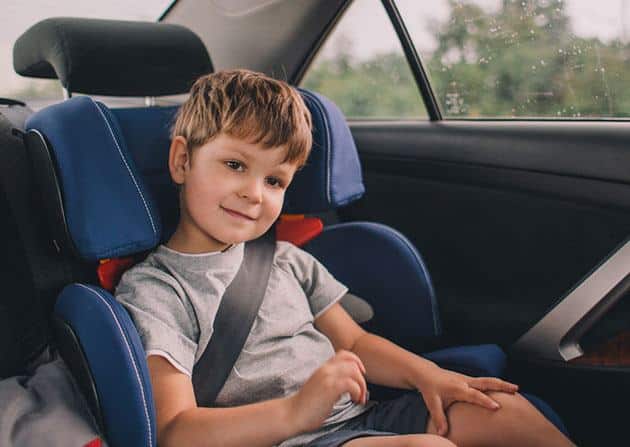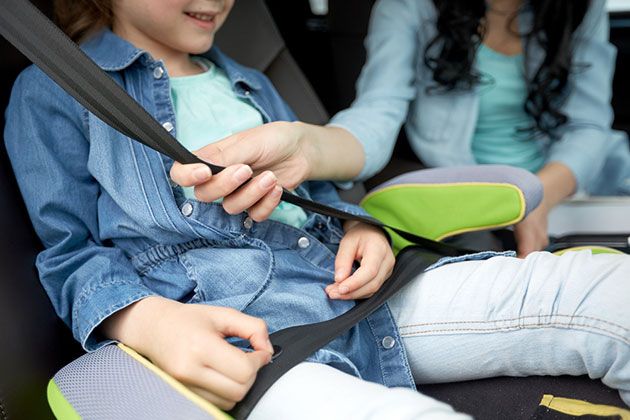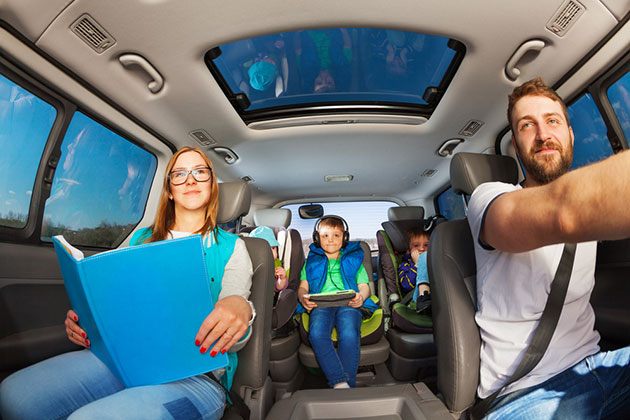Transitioning from a car seat to a booster is never an easy parenting step. It's necessary to know whether older kids still need boosters at some point or when kids stop using car seats completely.
You might be wondering, when do kids stop using car seats?
In this car seat guide, we discuss the good use of seat belts and the appropriate time to start using seat belts as a restraining device!
More...
Table of Contents
- When to Stop Using a Booster Seat?
- Car Seat & Seat Belt Safety Tips
- Are Seat Belt Adjusters Safe for Your Child?
- What if Your Child Refuses to Use a Booster or Car Safety Seats?
- What if the Vehicle Seat Has Only Lap Belts?
- Why Are Early Seat Belt Tranzitions Dangerous?
- Why Can't Kids Ride in the Front Seat Before the Age of 13?
- FAQs
- Final Words
When to Stop Using a Booster Seat?
Check the weight & height limits
Booster seats are suitable for children from the age of four to the age of twelve until they reach the height of four feet and nine inches. Every booster seat has different height and weight limits that a car safety seat manufacturer must follow.

Check the national laws
Besides the weight and height limit of the booster, it's necessary to check the national laws in your state before the child stops using a booster seat. For example, in most countries, a child passenger younger than 13 must ride in the back seat, while booster use is necessary for children up to 135 cm or 12.
Maturity check: 5 step seat belt test
A five-step test should be conducted before the child stops using the booster. The five-step test will indicate whether the child is mature enough for the seat belt. If the child has not reached one of the five steps in the test, then he should continue using the booster seat.
Even if the child outgrows the current booster seat and is still not ready for a vehicle's seat belt, consider switching to the higher weight limit booster. The majority of belt-positioning booster seat models accommodate up to 120 pounds. If the child has a long torso, a booster seat that can reposition the lap belt is a perfect choice!
Car Seat & Seat Belt Safety Tips
Are Seat Belt Adjusters Safe for Your Child?

Seat belt adjusters, or seat belt extenders, are extension pieces that go between the male and female points of the seat belt. The extenders elongate the seat belt and can make the ride much more comfortable.
However, many parents wonder:
Are seat belt adjusters safe for kids as they are for adults?
Children should not be using seat belt adjusters for booster rides. The seat belt adjusters increase the risk of improper seat belt use and could risk car seat safety instead of offering a comfortable fit.
Initially, seat belt adjusters were invented to help obese adults buckle up. However, belt adjusters should never be used with car seats, booster seats, or non-obese adults. Only a seat belt will offer the protection your child once transitioned from car safety seats.
What if Your Child Refuses to Use a Booster or Car Safety Seats?
It's possible your child will not like the booster seat or refuse to use the seat completely. However, car safety is a priority, and there is no room for negotiation. So here are some tips you can follow and try to solve the booster use problem once and for all!
What if the Vehicle Seat Has Only Lap Belts?

Lap belts alone do not offer adequate car safety for the young child. Car seat safety specifies that you need both lap and shoulder belts to restrain a child's body properly. However, if your vehicle has only lap belts in the back, here is what you can do.
Why Are Early Seat Belt Tranzitions Dangerous?
Transitioning from a booster to a safety belt is an inevitable part of growing up. However, why is swapping the booster for a seat belt so dangerous if it is done a bit earlier?
Booster car seats are designed for the child's age, weight, and height measurements. With the help of the booster seat, the child reaches the proper seat belt fit he otherwise could not.
Using the seat belt earlier than advised could lead to "safety-belt syndrome." The back and front belts are designed to protect an adult body. However, a child's small body can often not be adequately restrained with a seat belt, which can contribute to severe injuries in car crashes.
Abdominal and spinal traumas often follow the premature deceleration of seat belts in children. For this reason, booster seats are the best solution to keep the child's head, torso, and legs perfectly aligned with the vehicle seat belt.
Seat belts are often misused with unboosted children. The seat belt is placed above the pelvis and over the soft abdomen with improper use. In case of a collision, the pressure of the improper seat belt can lead to severe injury.
Although boosters have a lower weight limit of 40 pounds, most children of that weight and age are often not mature enough for a booster. In this case, the child needs to stay riding in the appropriate toddler seat.
Children between 4-8 do not yet have the height to wear shoulder belts properly. Instead, children may often place the shoulder belts behind their backs or under their arms, allowing the body to move forward in case of a crash.
Why Can't Kids Ride in the Front Seat Before the Age of 13?
The vehicle's back seat is considered the safest for children, while front seat rides are not allowed before age 13. In addition, the deployment of airbags presents a grave danger to children riding in the front seat.
The airbags are designed to protect an average adult of 150 pounds and are at least 5 feet tall. A child wearing a seat belt in the front is more likely to suffer internal injuries from an airbag than an adult. In addition, the rapid deployment of the airbag often results in head injuries in children, as the force of the airbag raises the child of the vehicle seat.
If the child is over 13 years old and wants to ride in the front seat, a parent can ensure a safe ride by doing the following:
- Make sure the child is always wearing the seat belt properly.
- Move the front seat as far as you can from the airbags. Since crashes impact the front seat first, ensure the seat is at least further back.
Once a child outgrows the car seat, the safest riding position is in the middle back seat with a lap and shoulder belt. However, whether your child can legally ride in the front seat will depend on your state's laws.
FAQs
When can my child switch from a booster seat to seat belts alone?
A child can switch to seat belt rides once exceeding the weight and height limits of a booster seat. A complete car seat maturity test should be conducted to check whether the child can sit properly without the booster seat with a seat belt restraint.
When can my kids legally travel without a car seat?

Children can travel legally without a car seat after they reach 135 cm in height and are over 12 years old. However, children younger than 13 should still ride in the back seat with properly positioned safety belts.
When can a child stop using a booster seat in Australia?
Children can stop using a booster seat in Australia once they are over 145 cm and pass the five-step car seat test. Usually, children reach a height of 145 cm, around 11. However, a booster should still be in use if the child has reached the height but is still not mature enough for the seat belt.
Are all booster seats the same width?
No, not all booster seats are the same. A booster seat is designed to fit a growing child, which is why some boosters have an extendable wing design. The sides of the high-back booster can be adjusted to fit the child. In addition, the adjustable side panels are beneficial for smaller vehicles lacking backspace.
Some booster seats are narrow and slim, so they fit perfectly in three across installations.
Final Words
Let’s summarize a bit when do kids stop using car seats:
Big kids might want to transition from their boosters as quickly as possible. However, as a parent, you must test your child's ability to ride with a seat belt before they stop using car seats completely.
